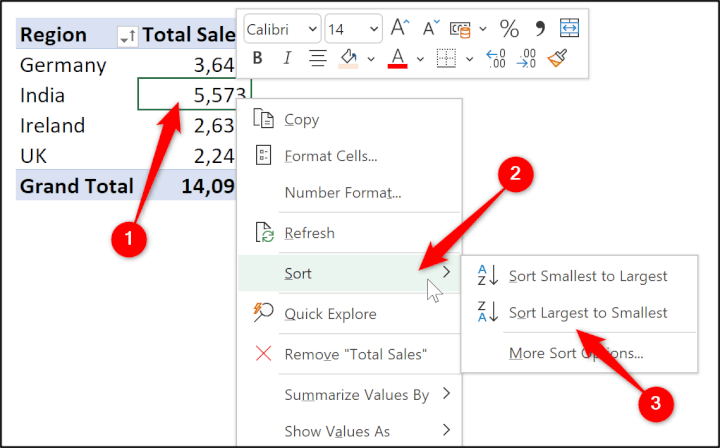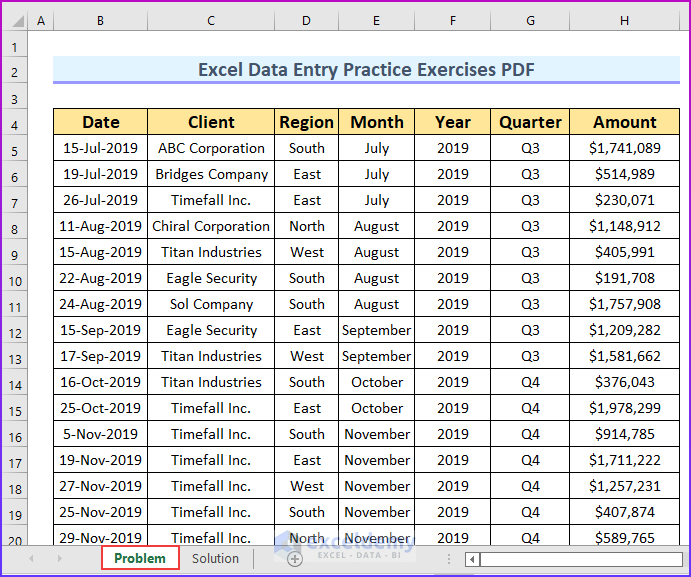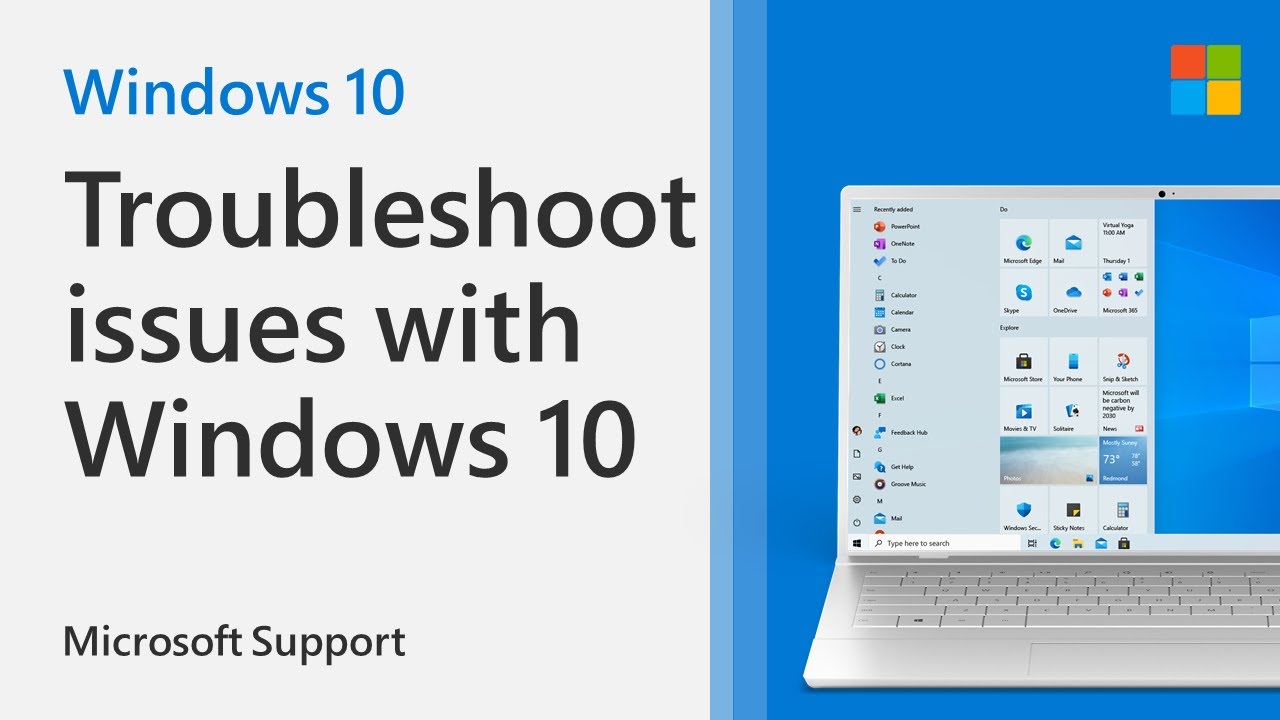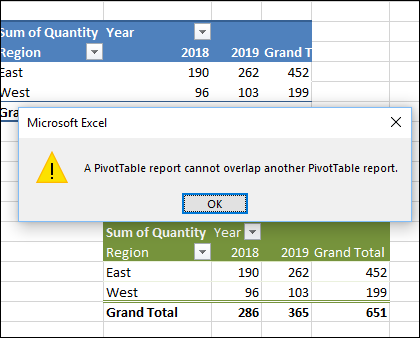Fixing Your Unsorted Pivot Table Woes

Are you struggling with unsorted pivot tables in Microsoft Excel? It's a common issue that can leave you scratching your head, especially when you need to present organized data. Fortunately, there's a simple solution to this problem, and we're here to guide you through it step by step. By the end of this article, you'll be equipped with the knowledge to sort your pivot tables with ease, ensuring your data is presented in a clear and structured manner.
Understanding the Pivot Table Conundrum

Pivot tables are a powerful tool in Excel, allowing you to analyze and manipulate large datasets efficiently. However, when you create a pivot table without specifying the sort order, the default behavior might not align with your desired presentation. This can lead to a jumbled mess of data, making it difficult to extract meaningful insights.
Imagine you've collected sales data for your company, including product names, quantities sold, and revenue generated. You want to create a pivot table to analyze this data and present it to your team or clients. Without proper sorting, the table might display random rows, making it hard to identify trends or compare specific products.
The Importance of Sorting
Sorting your pivot table data is crucial for several reasons. First, it enhances readability and clarity, ensuring that your audience can quickly grasp the key insights from the data. Second, it allows for easy comparison of values, whether you’re tracking sales performance, analyzing customer feedback, or managing inventory levels.
Additionally, sorting can help you identify outliers or anomalies in your data. For example, if you sort your sales data by revenue, you might quickly spot a particular product with unusually high sales, prompting further investigation into its success factors.
| Product | Quantity Sold | Revenue |
|---|---|---|
| Widget A | 120 | $2,400 |
| Gadget B | 85 | $1,700 |
| Accessory C | 150 | $3,000 |
| Tool D | 50 | $1,000 |

The Step-by-Step Guide to Sorting Pivot Tables

Now, let’s delve into the process of sorting your unsorted pivot table. This guide will walk you through the steps, ensuring you can apply this technique to any pivot table you create.
Step 1: Select the Pivot Table
Begin by clicking on any cell within your pivot table. This will activate the pivot table tools in the Excel ribbon.
Step 2: Access the PivotTable Analyze Tools
In the Excel ribbon, locate the “Analyze” tab under “PivotTable Tools.” This tab contains various options for manipulating your pivot table.
Step 3: Open the Sort Options
Within the “Analyze” tab, navigate to the “Sort” section. Here, you’ll find the “Sort” dropdown menu. Click on this menu to reveal the sorting options.
Step 4: Choose Your Sort Criteria
Excel offers a range of sorting options, including “Smallest to Largest,” “Largest to Smallest,” “Oldest to Newest,” and “Newest to Oldest.” Select the option that aligns with your data and the desired presentation.
For instance, if you want to sort your sales data by revenue, you'd choose "Largest to Smallest" to display the products with the highest revenue at the top.
Step 5: Apply the Sort
After selecting your preferred sort option, Excel will automatically apply the sorting to your pivot table. The rows will rearrange, presenting your data in the chosen order.
Step 6: Verify and Adjust (Optional)
Take a moment to review the sorted pivot table. Ensure that the data is organized as intended. If needed, you can repeat the sorting process to adjust the order or try a different sort criterion.
Advanced Sorting Techniques
While the basic sorting method is straightforward, Excel offers more advanced techniques for handling complex data. Here are a few additional tips to enhance your pivot table sorting skills.
Multiple-Field Sorting
You can sort your pivot table by multiple fields simultaneously. For example, you might want to sort your sales data first by product category and then by revenue within each category. This ensures a comprehensive analysis.
Custom Sorting
Excel allows you to create custom sorting orders. This is especially useful when dealing with data that has specific criteria, such as sorting by product names in a particular sequence.
Sorting by Values or Labels
Excel provides the flexibility to sort by both values (such as quantities or revenues) and labels (product names or categories). Choose the option that best suits your analysis goals.
Troubleshooting Common Issues
Despite the simplicity of sorting pivot tables, some users may encounter minor hiccups. Here are a few common issues and their solutions.
Issue: Sorting Doesn’t Seem to Work
If your pivot table isn’t sorting as expected, ensure that you’ve selected the correct field for sorting. Also, verify that you’ve chosen the appropriate sort order (ascending or descending) for your data.
Issue: Sorting Affects Other Data
By default, Excel sorts the entire pivot table. If you only want to sort specific columns or rows, you can right-click on the field you wish to sort and select “Sort” from the context menu. This way, you can maintain the integrity of other data in your pivot table.
Issue: Sorting Disrupts Formulas
When sorting a pivot table, Excel may adjust the cell references in associated formulas. To avoid this, consider using structured references or named ranges. These references will maintain their integrity even when the data is sorted.
Can I sort a pivot table based on a calculated field?
+Yes, you can! Excel allows you to create calculated fields in pivot tables, and you can sort by these fields just like any other data. This is especially useful when you need to analyze data based on custom calculations.
Is it possible to sort a pivot table by date?
+Absolutely! When sorting a pivot table by date, ensure that your date field is formatted consistently. Excel provides various date sorting options, including "Oldest to Newest" and "Newest to Oldest."
How can I reverse the sort order after sorting a pivot table?
+To reverse the sort order, simply select the same sort option again. For example, if you initially sorted by "Largest to Smallest," selecting "Largest to Smallest" again will reverse the order to "Smallest to Largest."
Conclusion

Sorting your pivot tables is a crucial step in presenting your data effectively. By following the steps outlined in this guide, you’ll be able to organize your pivot tables with ease, making your data analysis and presentation a breeze. Remember, a well-sorted pivot table can unlock valuable insights and help you make informed decisions.



